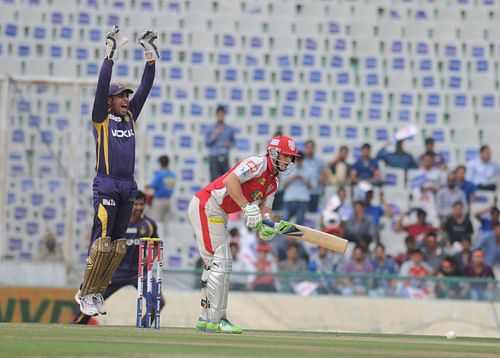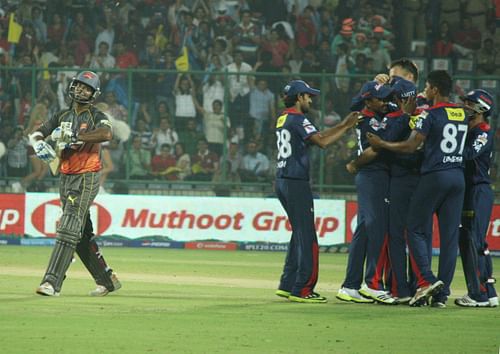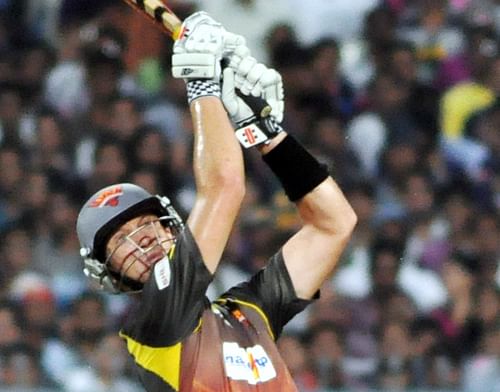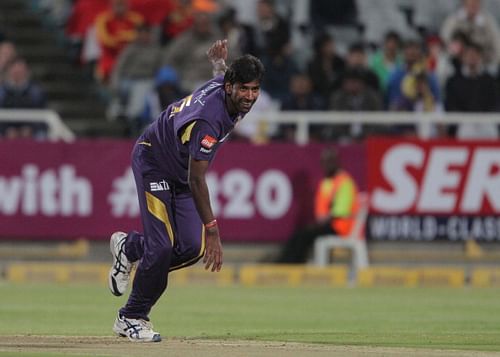
The five most unpleasant surprises of the IPL so far
In my last article, I had talked about the propensity of the IPL to throw up some pleasant surprise performers who you would have never expected to do as well as they did. Unfortunately, every silver lining has a cloud covering it and, as much as the IPL serves as a potential springboard for greater glory, it has quite often led to Goliaths plumbing new depths.
This article talks about five players who came into the IPL with a big ticket billing – some as captains, others off a good last year. So far, most of them have managed to come up chumps and, in the process, have raised questions as to whether the money splashed on a player is directly proportional to one’s chances of figuring in the starting XI.
Adam Gilchrist – If Twenty20 cricket had been discovered five years earlier than it was, Adam Gilchrist would have been one of its founding fathers. Despite being a late starter, he managed to hold his own pretty well, winning the second edition of the IPL with the Deccan Chargers and then shepherding a bunch of raw youngsters like Mandeep Singh and Parvinder Awana in a low-profile Punjab team.

But much water has flowed through the stream. After the first half of this year’s IPL, Gilchrist was averaging 11.75 at a strike rate of 106.81. He had entered double figures only twice and, on most occasions, was nothing more than a walking wicket. His keeping is still as good as it was always, but then we are talking about the player who redefined the role of a wicket-keeper batsman and raised the bar for those who followed.
It is also difficult to summon the body to perform miracles after a year in the cold. It is hard to believe that Gilly is playing for money – he was one of the first to walk during his playing days when he was out. Maybe he wants to repeat the Chargers miracle once again with the Kings XI. However, man proposes but God disposes. The magic has gone out of our lives.
Kumar Sangakkara – Another wicket-keeper, another captain. Another player who had to drop himself for fear of becoming a liability for his team. Clearly the IPL does not care a lot for reputations.

After the first four matches, Sangakkara found himself in a difficult situation – he had not scored less than 15 in each of those innings but then he hadn’t scored more than 28 either. After he scored 2 in the next match, he was prompt enough to realize that the likes of Quinton de Kock should be given a chance to grow into the role where he had not been able to establish himself.
But then Sangakkara, a lawyer by qualification, has always been a thinking cricketer. Not your slam bang everyday Joe, it is a pleasure to watch Sangakkara in full flow. Otherwise, it is a pain to see him go against his natural game and struggle to score against mediocre bowling attacks in the Twenty20 format.
He took up the gloves for the first time in his comeback match against the Royals, but that did not help him get over his tussle with his batting woes. The Sunrisers have a couple of keeping options in de Kock and Parthiv Patel, and now they have also got their run machine Shikhar Dhawan back. Their superlative performance so far has been largely thanks to their bowling attack – the batting needs to shore up and Sangakkara, on current form, might not be the best go-to man.
Cameron White – What’s it with the Sunrisers batsmen? Almost everyone with the exception of Hanuma Vihari has been a failure this season. And the worst part of it is that their foreign players have failed to get going.

Cameron White’s tournament so far can be represented on a bell curve – he had a slow start against the Warriors and the Royal Challengers before he turned it on in the Super Over to send Bangalore packing. He followed that up with an explosive 52 in the next match, again against Bangalore; but since then, his tournament has once again tapered off after a combative 31 against the Knight Riders.
The worst part about White is his unpredictability – when he’s bad, he’s very bad; but when he is good, he can be mindbogglingly good. The problem is that he turns out of the other side of the bed more often. Last season, he was one of the Chargers’ greatest flops till he decided to turn things around and help his team avoid the wooden spoon. This season has been the exact opposite.
If White’s slide does not abate soon enough, chances are that he will find himself walking out of the team. As many have found out, no one is indispensable in Twenty20 cricket.
Piyush Chawla – To be fair to Chawla, for all his indiscretions at the national level, he has been as steady, if somewhat limited, as a spinner in the shortest format. He had his moments of shame – most clearly etched in his mind would be Robin Peterson’s 27 runs in a single over last season. But he has managed to carry out his duties as the lead spinner over the last five years or so quite effectively, with 73 wickets in 71 matches.

This season has been his worst so far. He hasn’t given away a bucketful of runs, but has been, more often than not, reduced to a significant degree of impotence. The low and slow bowler-friendly pitches haven’t helped him or, in all probability, he hasn’t helped himself. 4 wickets in 9 matches is not what you expect from your most experienced bowler – more importantly when the batting is tinged with the rawest tinge of green.
So far, the Kings’ strategy of a four-pronged pace attack has taken the limelight off him. The likes of Bhargav Bhatt and Bipul Sharma are waiting in the wings though, and all it takes is one opportunity and a good showing to rest one’s case further. Chawla’s days are numbered unless he manages to improve his own numbers.
Lakshmipathy Balaji – One of the greatest enigmas of modern day cricket, Balaji could hit Shoaib Akhtar out of the ground for a sublime straight six and wobble the ball around on its seam to take a nine-for in a Test match against Pakistan.

His pace might be more dibbly-dobbly than express, but Balaji was one of the unsung performers last season as he lent ample support to Narine and Shakib in decimating the opposition batsmen. His performances were so good that he found himself in the World T20 squad and even managed to play a few games.
This year, though, he has gone completely off the boil. Balaji has picked up 5 wickets in 8 matches at an brow-raising economy rate of 8.34. He has conceded 89 runs the last two times he bowled and, if you add another spell against the Kings XI where he gave away 39, you would figure that clearly something is wrong.
With Brett Lee‘s exit, Balaji finds himself as the leader of an extremely one-dimensional pace attack, with Rajat Bhatia and Jacques Kallis not differing too much in terms of speed. He has failed to handle the mantle so far and, at 31, not too many doors are open for him.